Jensen Huang at Computex: "It's not because we don't love GeForce, GeForce got us here."
For when you want a gaming laptop that doesn't cost as much as two months rent.
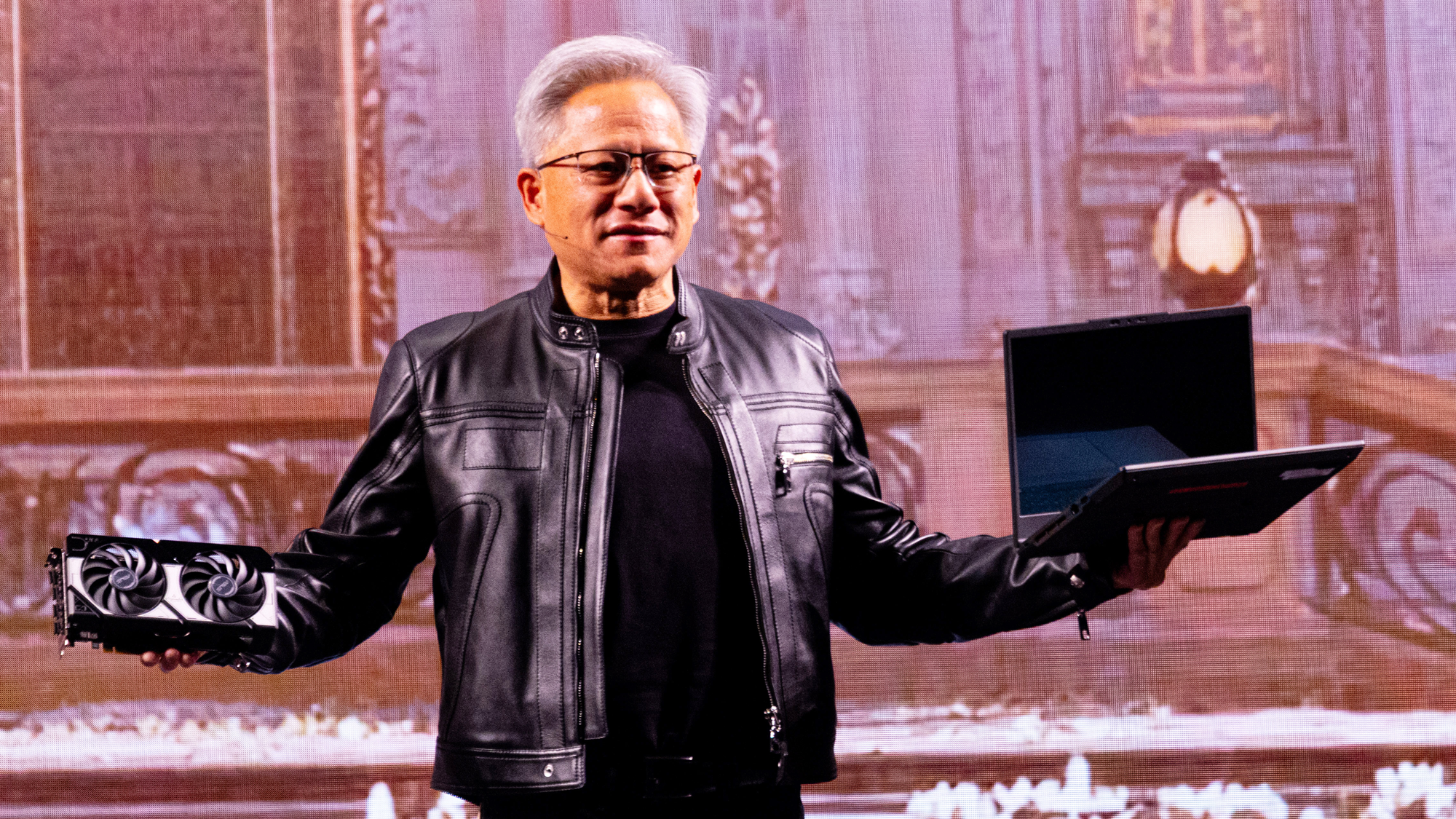
Gaming laptop fans might finally be able to snag an RTX 50-series gaming rig for less than the cost of rent in NYC.
Nvidia's CEO, Jensen Huang, took the stage on Monday for the Computex opening keynote at the Taipei Music Center. While much of the speech focused on AI, robotics, and data center information, Nvidia did not forget gamers and the GeForce platform.
"As CEO, you have a lot of children," Huang told the crowd. "Now our keynotes are 90% not GeForce, but it's not because we don't love GeForce, GeForce got us here."
Of the many announcements about GeForce gaming from Nvidia at Computex, the one that was most important to gamers was the official release of the RTX 5060 laptop GPU.
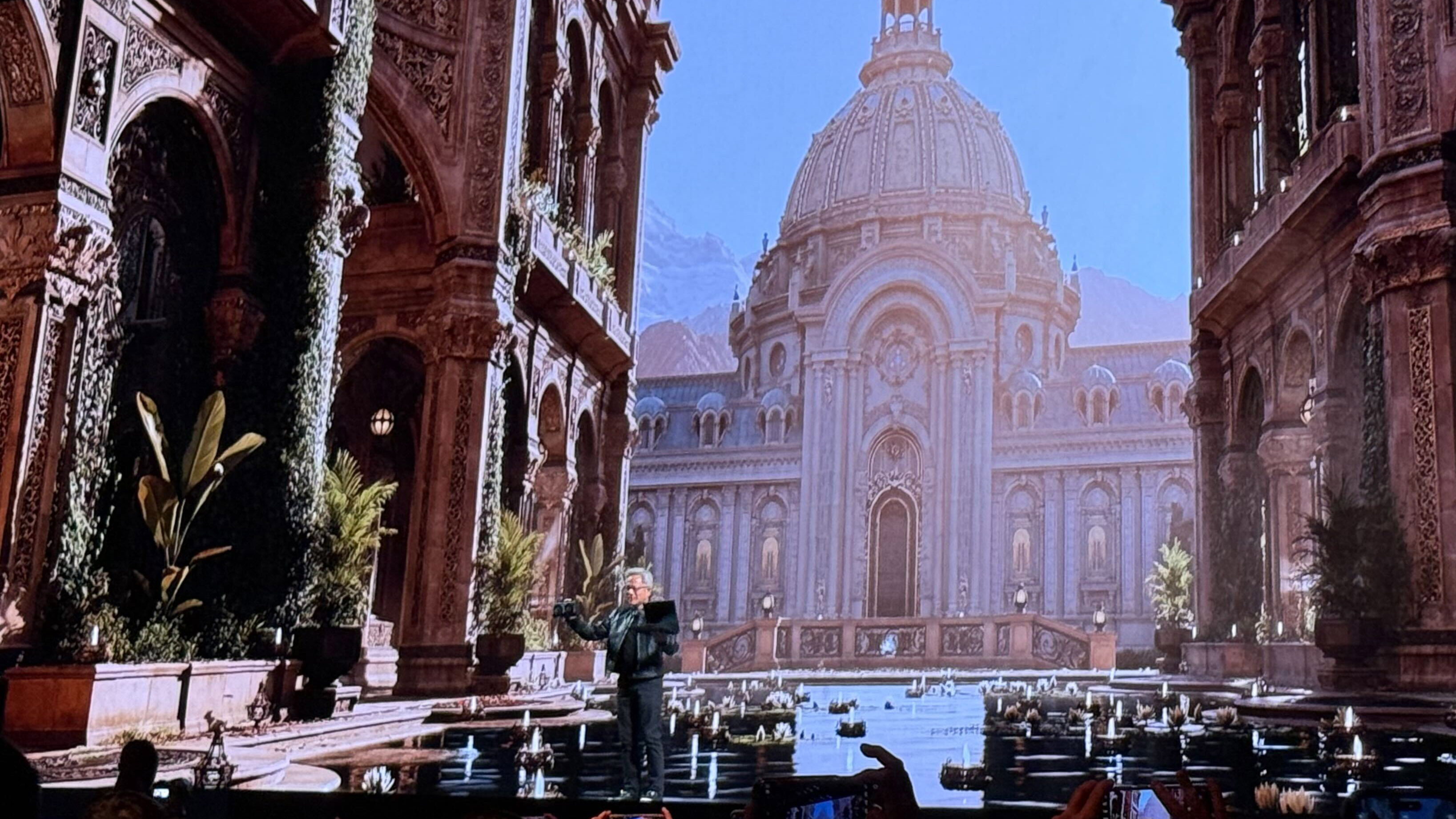
While we have known the RTX 5060's mobile variant was in the works for some time now, this is the official unveiling of Nvidia's more budget-friendly laptop GPU. Systems featuring the RTX 5060 are available starting today.
So here's what we know about the RTX 5060 so far.
Nvidia RTX 5060 Laptop GPU specs
| Row 0 - Cell 0 | Cuda Cores | VRAM | Memory bus |
RTX 5060 | 3,328 | 8GB | 128 bit |
RTX 5060 Laptop GPU performance
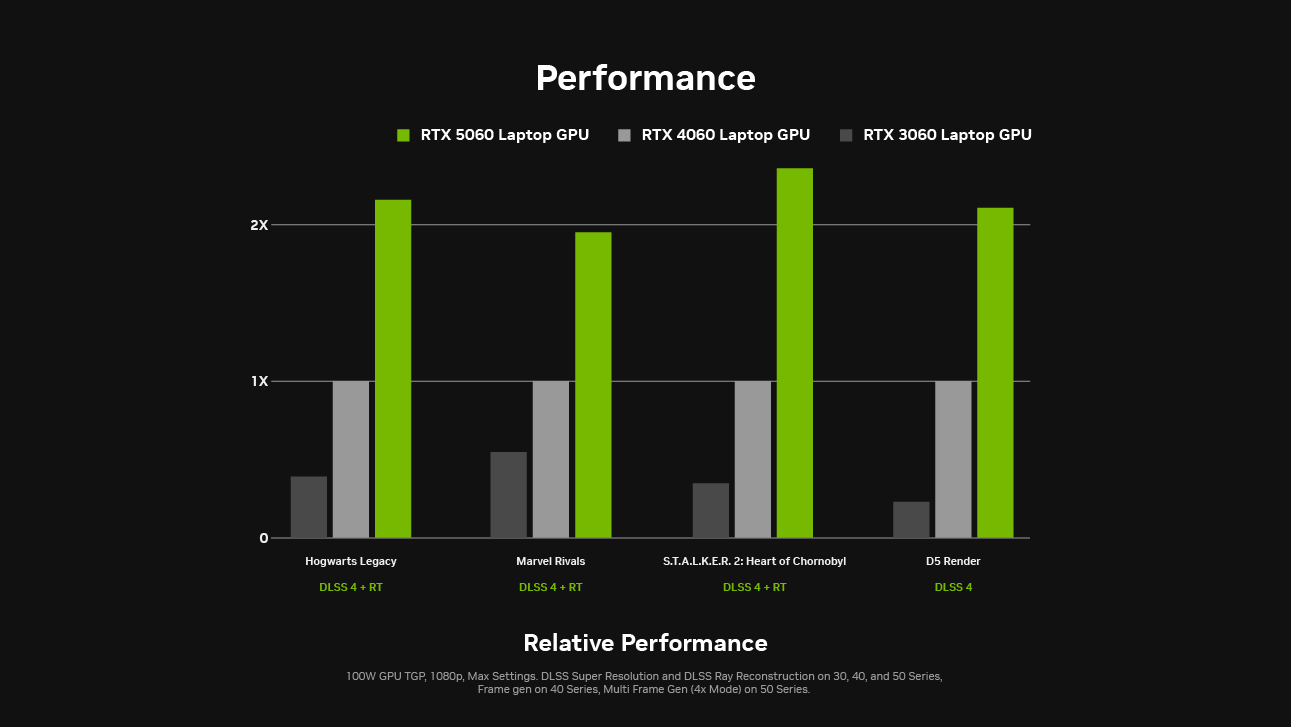
Nvidia claims the RTX 5060 is over two times as powerful as the RTX 3060. Of course, those claims include Nvidia's new DLSS 4 and frame generation technology so that you won't get that much uplift on pure silicon power.
Sign up to receive The Snapshot, a free special dispatch from Laptop Mag, in your inbox.
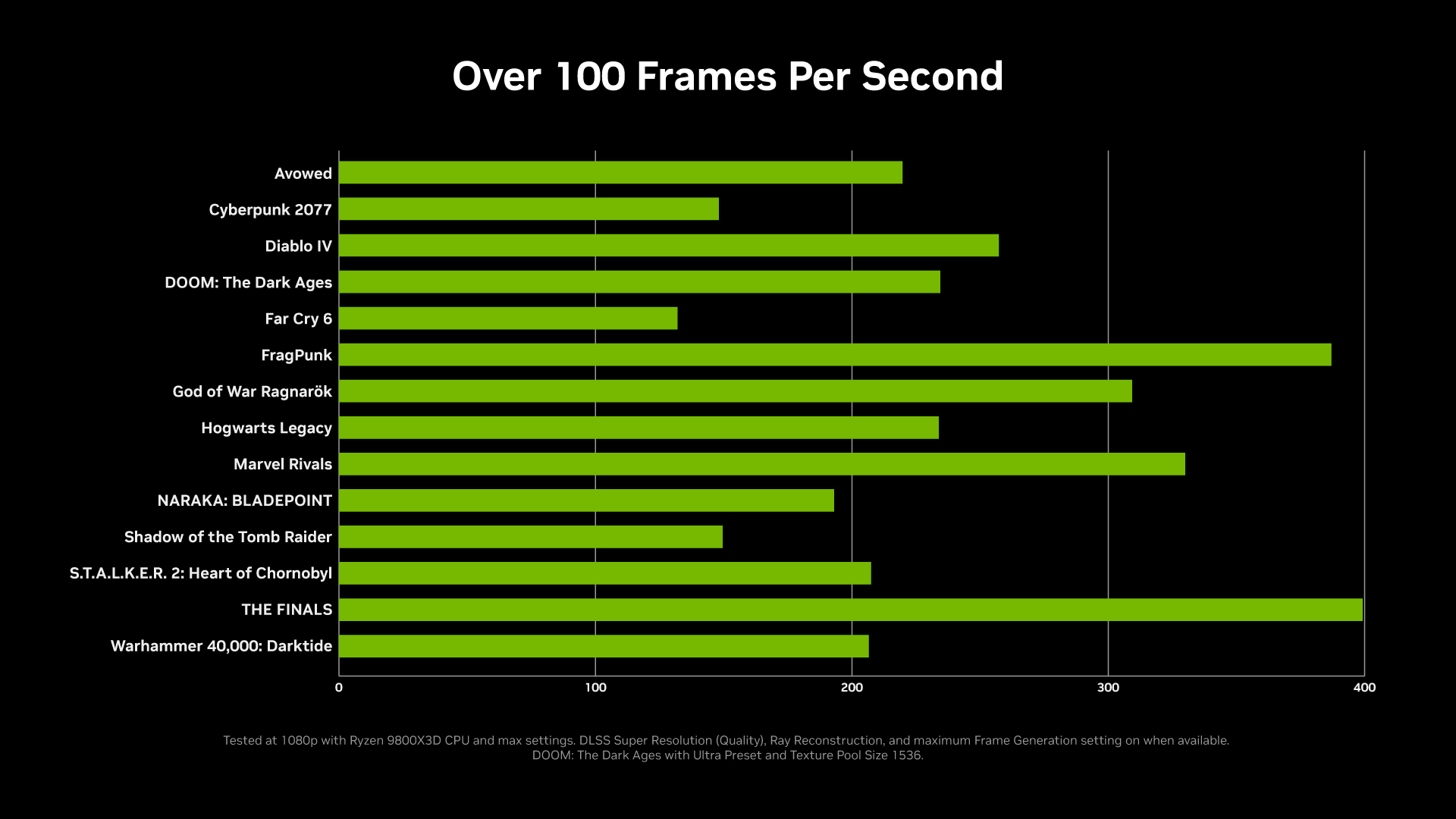
But if you're willing to accept AI frame generation technology, you can easily get frame rates exceeding 100FPS at 1080p with an RTX 5060, even on demanding games like Avowed, Cyberpunk 2077, and Doom: The Dark Ages.
Without the use of DLSS 4 and frame generation, you should still hit the 60fps minimum playability benchmark with an RTX 5060 laptop. But if you have an RTX 4060 laptop, it may not be worth upgrading yet this gen.
When to expect RTX 5060 gaming laptops
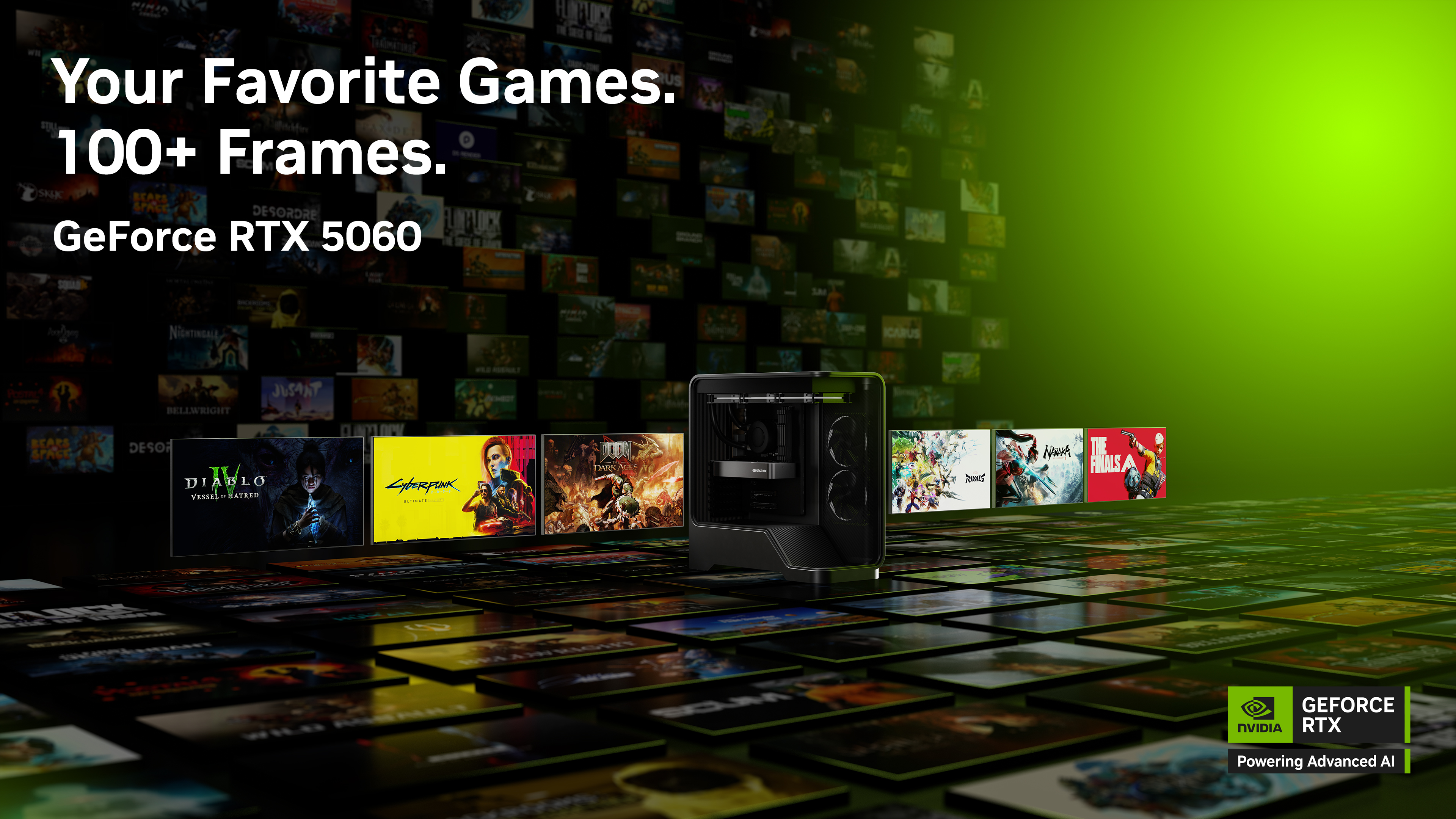
Nvidia's RTX 5060 GPUs will launch concurrently, with the 5060 desktop and laptop GPUs starting today, May 19, 2025.
Laptops featuring the RTX 5060 laptop GPU are expected to start at just $1,099, though prices will vary by manufacturer.
If the RTX 5060 laptops follow the same trend as the RTX 5090 laptops, Nvidia's quoted starting price will be well below what systems actually retail for. Nvidia announced the RTX 5090 laptops as starting at $2,899. We've yet to review an RTX 5090 laptop that came even close to that price point.
Based on the current trend of gaming laptop pricing and US tariffs, it's probably best to assume most RTX 5060 laptops will cost closer to $1,500.
Folks searching for a gaming laptop at a bargain price might still want to hold out for the expected RTX 5050, which is expected to come later this year. Or, go back a generation and grab an RTX 4060 or 4050 laptop before they sell out.
Other announcements from the Nvidia Computex 2025 keynote

Nvidia had plenty of other announcements to make at Computex, mostly revolving around the company's robotics and artificial intelligence ventures.
"Nvidia is not a technology company only anymore," Huang enthused. "We are an essential infrastructure company."
Specifically, Nvidia is an AI Infrastructure company. "In ten years' time, you will look back and realize AI has integrated into everything." Huang's view of the future is that "AI is in everything."
From chips to systems to data centers to infrastructure, Nvidia intends to be at the forefront of all artificial intelligence systems into the future.
Nvidia is still working on quantum computing with Cuda-Q, powered by the Nvidia Grace CPU and Nvidia Blackwell GPU platforms.
As for robotics, Nvidia sees general robotics as the "next Trillion-Dollar industry." And "it's where we're going in the future," Huang claimed.

And the road to that starts with the Grace Blackwell system. "Now you're starting to see it coming up from everywhere."
"We will increase the performance of our platform every year, like rhythm." And thus, Grace Blackwell will be upgraded to Grace Blackwell BG300, with a new Grace Blackwell Ultra superchip.
Grace Blackwell GB300 is even more powerful and efficient than previous superchips, thanks to the Grace Blackwell NVL72 system, which allows Nvidia to combine two Grace Blackwell chips for additional power on a GB300 super tray.
"That is extreme Moore's Law," Haung claimed. This is an interesting pivot from the man who claimed that Moore's Law is dead, as semiconductors can only get so small or fast.
Then again, in recent months, Nvidia's answer has pivoted to “Our systems are progressing way faster than Moore’s Law” because of artificial intelligence.
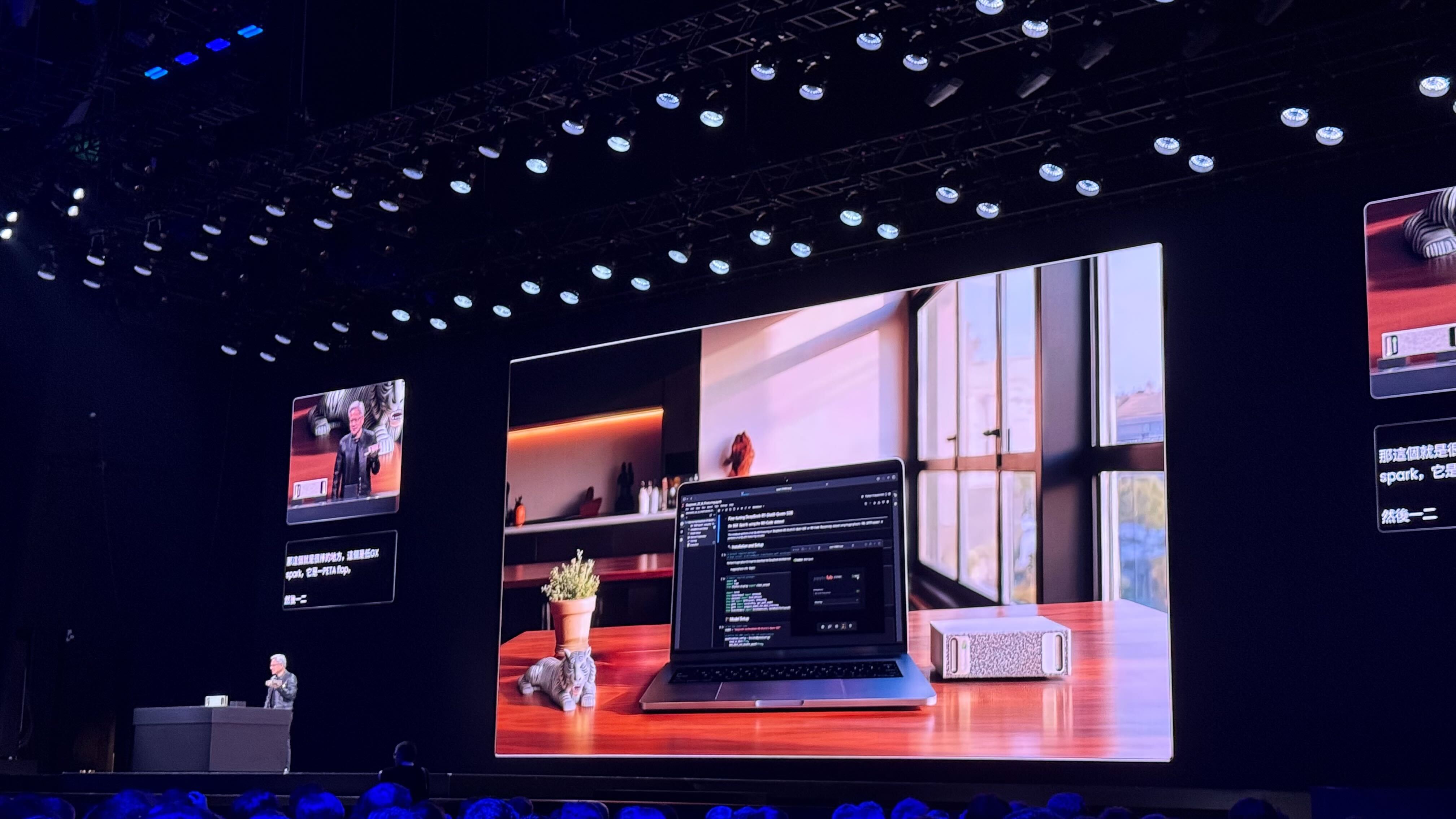
Nvidia also shared an update about it's AI PC collaboration project with MediaTek, the former Project Digits supercomputer, now called DGX Spark.
When can we expect DGX Spark to hit the shelves? Huang shared, "DGX Spark is now in full production... Everyone can have one for Christmas."
However, DGX Spark is not the only AI supercomputer Nvidia is working on. There will also be a desktop variant called DGX Station.
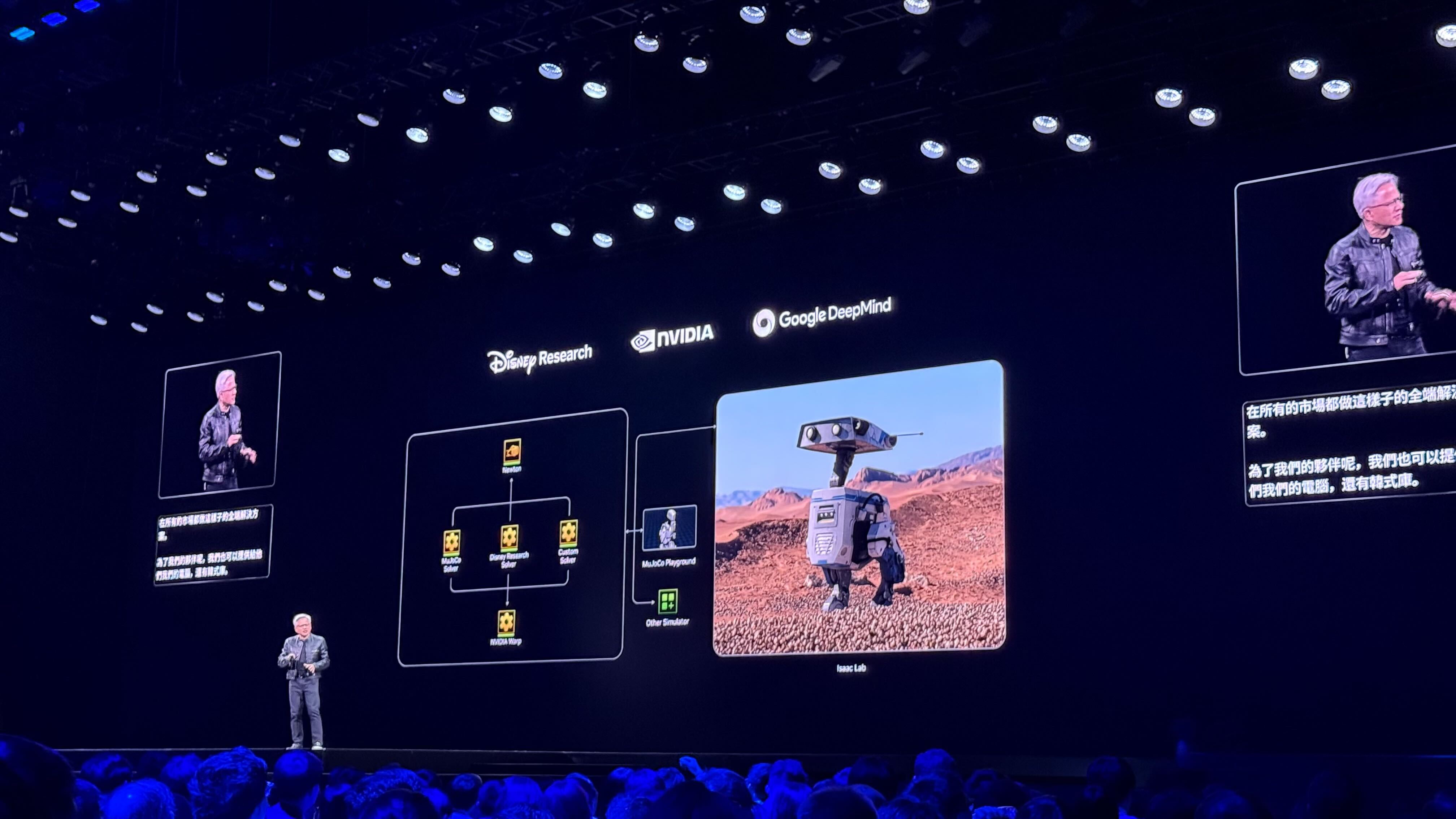
As for robots, Nvidia is working with partners to create training models and simulations for physical robots. Because "Who doesn't want that?"
The same systems that are helping train the Isaac Labs robots can be used for self-driving cars, and Nvidia is shipping autonomous car runtimes with Mercedes-Benz later this year.
"I'd love it if you buy everything from me, but please buy something from me," Huang joked before announcing that the Nvidia Isaac GROOT N1.5 robotics model is now open-source, completely free.
Finally, Huang wrapped up his keynote with the announcement of a new Taiwan office, called Nvidia Constellation. The new Nvidia HQ will be housed at Beitou-Shilin Technology Park in Taipei.
More from Laptop Mag

A former lab gremlin for Tom's Guide, Laptop Mag, Tom's Hardware, and TechRadar; Madeline has escaped the labs to join Laptop Mag as a Staff Writer. With over a decade of experience writing about tech and gaming, she may actually know a thing or two. Sometimes. When she isn't writing about the latest laptops and AI software, Madeline likes to throw herself into the ocean as a PADI scuba diving instructor and underwater photography enthusiast.
You must confirm your public display name before commenting
Please logout and then login again, you will then be prompted to enter your display name.
